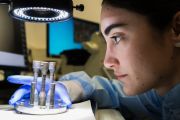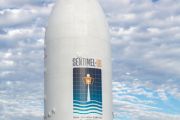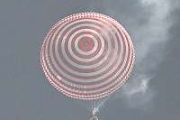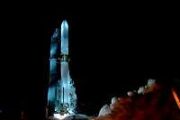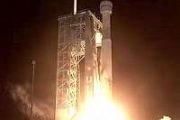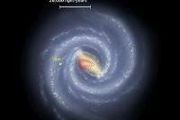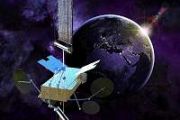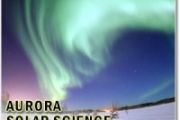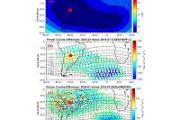
Copernical Team
New instrument to capture stardust as part of NASA mission
 Scientists and engineers at the CU Boulder will soon take part in an effort to collect a bit of stardust-the tiny bits of matter that flow through the Milky Way Galaxy and were once the initial building blocks of our solar system.
The pursuit is part of NASA's Interstellar Mapping and Acceleration Probe (IMAP) mission to explore our solar neighborhood-decoding the messages in particles fro
Scientists and engineers at the CU Boulder will soon take part in an effort to collect a bit of stardust-the tiny bits of matter that flow through the Milky Way Galaxy and were once the initial building blocks of our solar system.
The pursuit is part of NASA's Interstellar Mapping and Acceleration Probe (IMAP) mission to explore our solar neighborhood-decoding the messages in particles fro Earth-sized planet discovered in 'our solar backyard'
 A team of astronomers have discovered a planet closer and younger than any other Earth-sized world yet identified. It's a remarkably hot world whose proximity to our own planet and to a star like our sun mark it as a unique opportunity to study how planets evolve.
The new planet was described in a new study published this week by The Astronomical Journal. Melinda Soares-Furtado, a NASA Hub
A team of astronomers have discovered a planet closer and younger than any other Earth-sized world yet identified. It's a remarkably hot world whose proximity to our own planet and to a star like our sun mark it as a unique opportunity to study how planets evolve.
The new planet was described in a new study published this week by The Astronomical Journal. Melinda Soares-Furtado, a NASA Hub ASU talk will examine ethical questions surrounding life in space
 What is the impact of extended space travel on the human body? Can space travel bring life-threatening extraterrestrial contaminants back to Earth? Do we spend money on space exploration and research when there are problems on Earth to solve?
These questions and more will be tackled at an upcoming BioEthics Breakfast Club talk titled "Life in Space." The event takes place from 9 to 10 a.m.
What is the impact of extended space travel on the human body? Can space travel bring life-threatening extraterrestrial contaminants back to Earth? Do we spend money on space exploration and research when there are problems on Earth to solve?
These questions and more will be tackled at an upcoming BioEthics Breakfast Club talk titled "Life in Space." The event takes place from 9 to 10 a.m. A Big Cosmological Mystery
 The discovery of a second ultra-large structure in the remote universe has further challenged some of the basic assumptions about cosmology.
The Big Ring on the Sky is 9.2 billion light-years from Earth. It has a diameter of about 1.3 billion light-years, and a circumference of about four billion light-years. If we could step outside and see it directly, the diameter of the Big Ring would
The discovery of a second ultra-large structure in the remote universe has further challenged some of the basic assumptions about cosmology.
The Big Ring on the Sky is 9.2 billion light-years from Earth. It has a diameter of about 1.3 billion light-years, and a circumference of about four billion light-years. If we could step outside and see it directly, the diameter of the Big Ring would Japan successfully launches spy satellite
 Japan on Friday successfully launched a rocket with a payload of an intelligence-gathering satellite to improve its abilities to monitor North Korea and natural disasters, as several Asian nations seek to put spy orbitals into space.
The H2A rocket launched from the Tanegashima Space Center located on the southern Tanegashima Island at 1:44 p.m. local time Friday.
"The rocket fle
Japan on Friday successfully launched a rocket with a payload of an intelligence-gathering satellite to improve its abilities to monitor North Korea and natural disasters, as several Asian nations seek to put spy orbitals into space.
The H2A rocket launched from the Tanegashima Space Center located on the southern Tanegashima Island at 1:44 p.m. local time Friday.
"The rocket fle Indonesian MoD Partners with BlackSky for Advanced Space-Based Intelligence Services
 BlackSky Technology Inc. (NYSE: BKSY), a leader in real-time geospatial intelligence and satellite imaging, has recently announced its significant contract win from PT Len, exceeding $1 million, to support the Indonesian Ministry of Defense. This multi-year agreement underscores the growing need for immediate, high-frequency imagery and analytics services in defense operations.
Brian E. O'
BlackSky Technology Inc. (NYSE: BKSY), a leader in real-time geospatial intelligence and satellite imaging, has recently announced its significant contract win from PT Len, exceeding $1 million, to support the Indonesian Ministry of Defense. This multi-year agreement underscores the growing need for immediate, high-frequency imagery and analytics services in defense operations.
Brian E. O' NASA's Cryo Efforts Beyond the Atmosphere
 Establishing sustained operations at the Moon and Mars presents a multitude of opportunities and challenges NASA has yet to encounter. Many of these activities require new technologies and processes to ensure the agency is prepared for its ambitious Artemis missions and those beyond.
One of those challenges is working with cryogenic fluids, meaning fluids existing in a liquid state between
Establishing sustained operations at the Moon and Mars presents a multitude of opportunities and challenges NASA has yet to encounter. Many of these activities require new technologies and processes to ensure the agency is prepared for its ambitious Artemis missions and those beyond.
One of those challenges is working with cryogenic fluids, meaning fluids existing in a liquid state between Rocket maker working on medium-lift model
 CAS Space, a Beijing-based rocket maker owned by the Chinese Academy of Sciences, is working on the development of its new carrier rocket, Kinetica 2, and plans to conduct the new type's maiden flight in 2025, according to the company.
The Kinetica 2 is a medium-lift, liquid-fuel rocket and the second launch vehicle developed by CAS Space, following the Kinetica 1, formerly known as ZK 1A.
CAS Space, a Beijing-based rocket maker owned by the Chinese Academy of Sciences, is working on the development of its new carrier rocket, Kinetica 2, and plans to conduct the new type's maiden flight in 2025, according to the company.
The Kinetica 2 is a medium-lift, liquid-fuel rocket and the second launch vehicle developed by CAS Space, following the Kinetica 1, formerly known as ZK 1A. Doomed US lunar lander's space odyssey continues...for now
 Is it the little spaceship that could?
A private US lunar lander that's been hemorrhaging fuel since an onboard explosion at the start of its journey is somehow still chugging along, snapping selfies and running science instruments as it travels through space.
Though Astrobotic, the company that built the Peregrine robot, has said a controlled touchdown on the Moon is no longer possible
Is it the little spaceship that could?
A private US lunar lander that's been hemorrhaging fuel since an onboard explosion at the start of its journey is somehow still chugging along, snapping selfies and running science instruments as it travels through space.
Though Astrobotic, the company that built the Peregrine robot, has said a controlled touchdown on the Moon is no longer possible Watch live: liftoff of Marcus Wandt to space
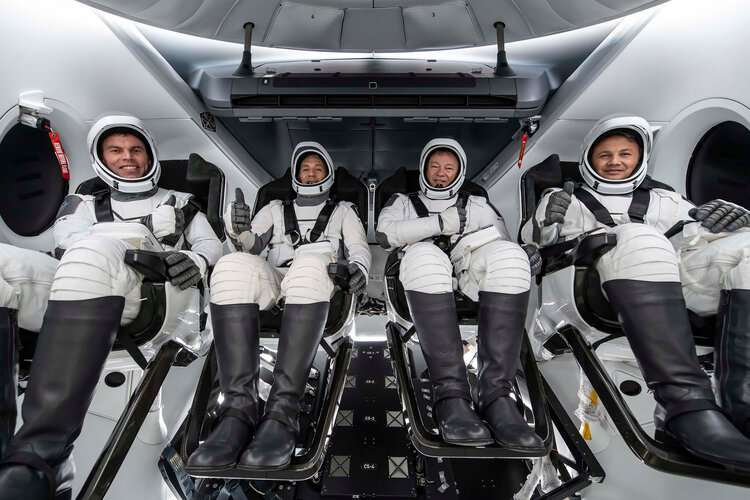
Tune in from Wednesday 17 January from 20:15 GMT/21:15 CET to see ESA project astronaut Marcus Wadnt take off to the International Space Station for his first mission, Muninn. Live coverage will run on ESA Web TV channel two.



